Rava Upma is a delicious and quick South Indian breakfast made with semolina (rava). I’ve always loved how simple it is to prepare, especially on busy mornings. Whether you’re a beginner or experienced cook, this recipe guarantees a tasty, nutritious start to your day!
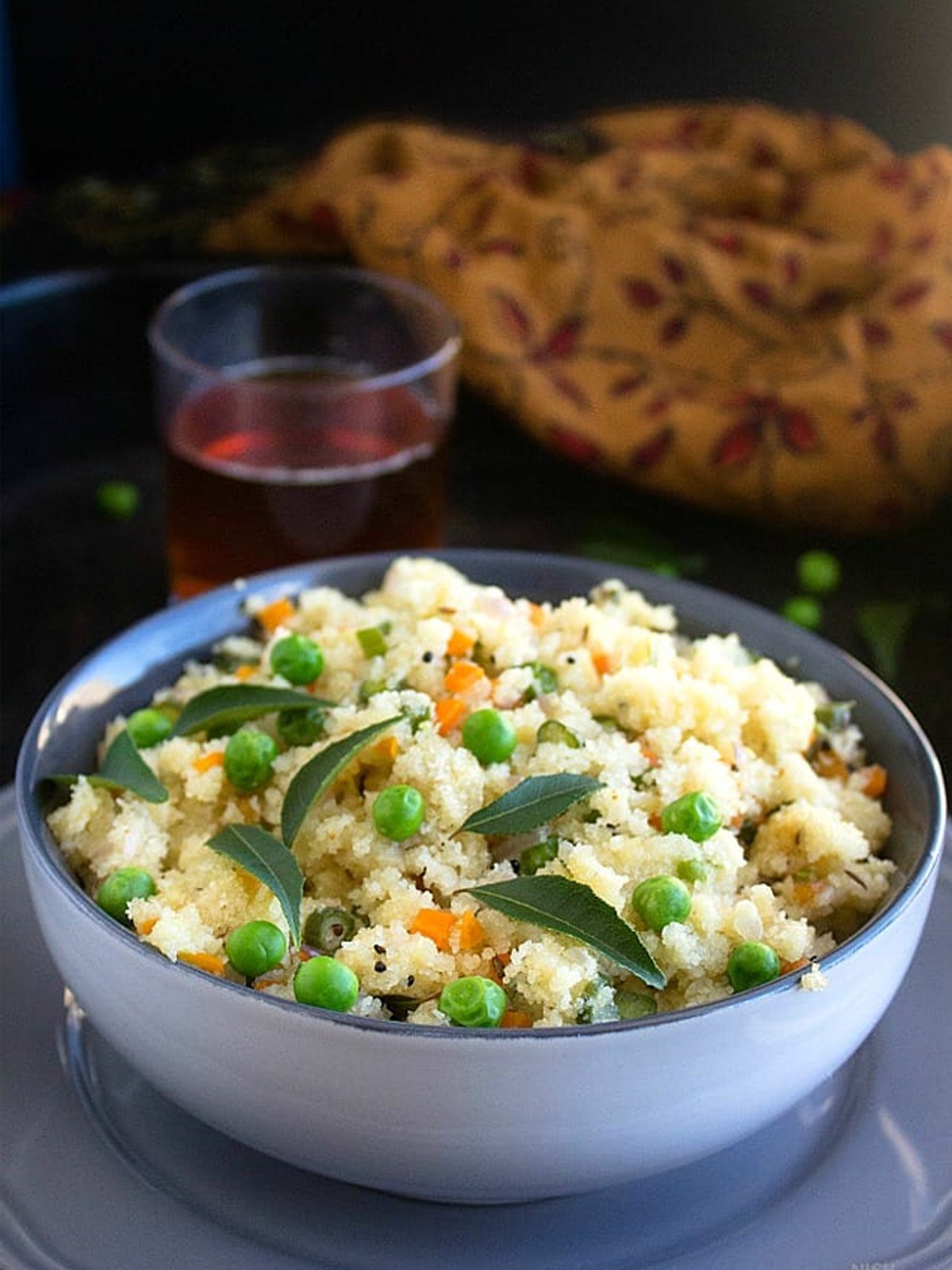
Jump to:
- What is Upma?
- Why Rava (Semolina)?
- What Kind Of Rava Should I Use?
- Getting the Water to Sooji Ratio Right for Upma
- Health Benefits
- What you Need to Make This Rava Upma Recipe
- How to Make Rava Upma Recipe
- Serving and Presentation Ideas
- Variations of Rava Upma
- Regional Variations
- Storage & Reheating Tips
- Tips for Perfect Upma
- Time-Saving Tips for Rava Upma
- ❔FAQs
What is Upma?
Upma is a tasty South Indian dish made from semolina (rava). It's cooked with spices, vegetables, and sometimes nuts. While it’s usually eaten for breakfast, you can enjoy it as a light meal or snack anytime.
One great thing about rava upma is how flexible and simple recipe it is. You can add different vegetables and spices to make it your own, so each time you cook it, it can taste different. This means everyone can enjoy upma in their own way!
Typically, it's flavored with mustard seeds, curry leaves, and green chilies, giving it a yummy mix of flavors. Because it's easy to make and comforting to eat, upma is a favorite in many Indian homes, bringing warmth and happiness to every meal.
Why Rava (Semolina)?
First of all, rava (or semolina) is super quick to cook, making it a perfect choice for busy mornings when you need a tasty meal in no time!
In addition, it's very filling, so you'll feel satisfied and energized after eating it, which is great for staying full until your next meal.
Also, rava can be flavored in so many different ways, whether you like it savory with spices and veggies or sweet with sugar and cardamom. This makes it super versatile!
So, all in all, rava is not only easy to make, but it's also a delicious, healthy option that can be adapted to your taste!
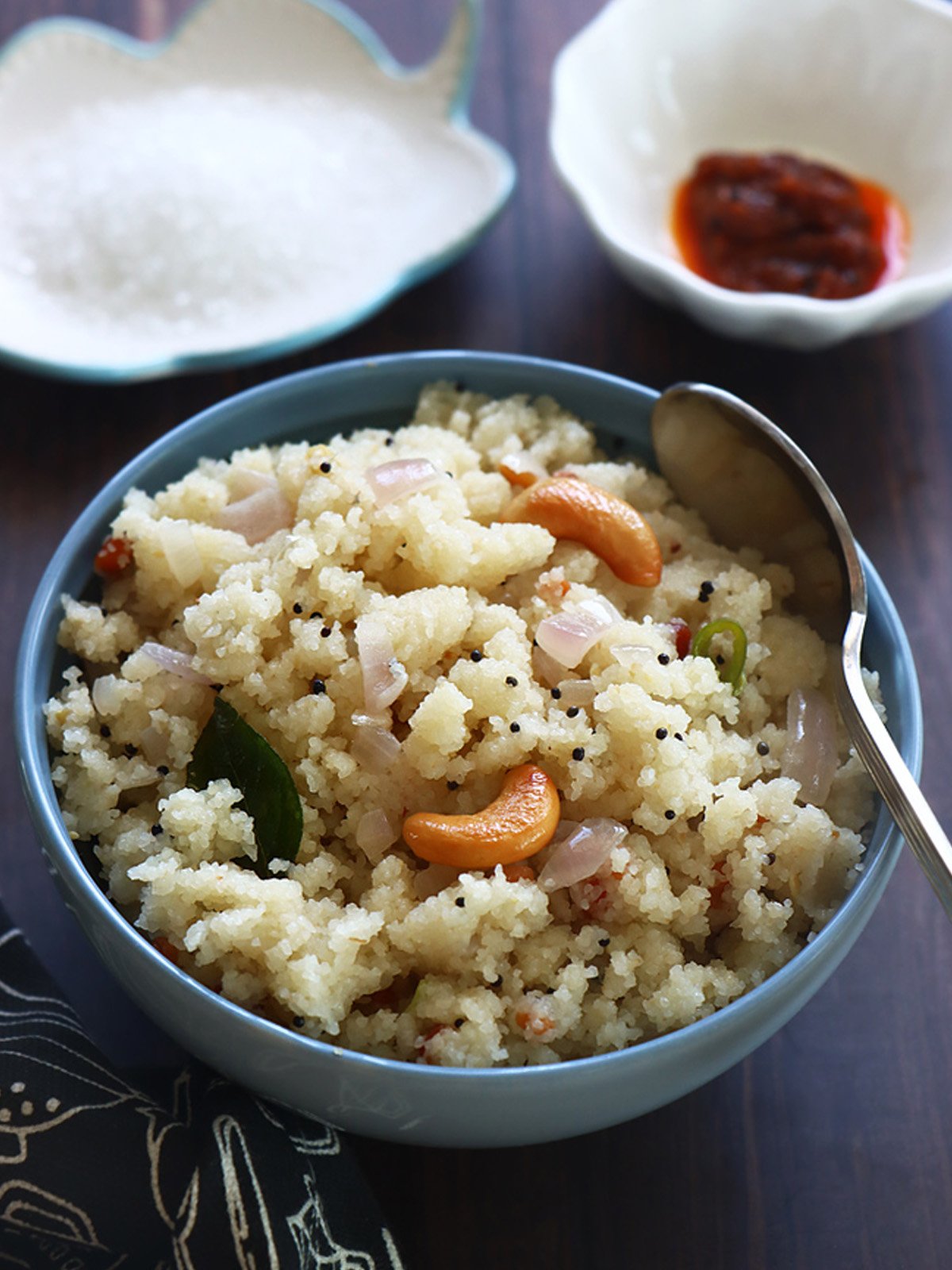
What Kind Of Rava Should I Use?
- For making rava upma, it’s best to use fine semolina (sooji) because it cooks quickly and gives a smooth texture.
- You can pick either regular or double-roasted rava; double-roasted gives a nuttier taste and a nice smell.
- However, try to avoid coarse semolina, as it can make the dish grainy, which isn’t what you want.
Getting the Water to Sooji Ratio Right for Upma
Making upma might seem simple and easy, but I had a tough time at first. Often, my rava upma recipe ended up super dry and didn’t have the fluffy texture like the ones served in South Indian restaurants. Even though I tried different recipes, my results were never the same.
After many tries and experiments, I learned something important. Many recipes say to use a 1:2 ratio of sooji to water, but that never worked for me. My upma was either too dry or not cooked enough.
Then, I discovered a better ratio: 1:3. This means for every 1 cup of sooji, I used 3 cups of water. This change made a big difference!
Now, my upma turns out perfectly cooked—neither too dry nor too mushy—just like the delicious upma I always wanted to make.
Health Benefits
- High in Fiber: Rava (semolina) provides a good amount of fiber, promoting digestion.
- Good for Energy: Rich in carbohydrates, it gives you a quick energy boost.
- Packed with Protein: The addition of vegetables and spices adds a little protein.
- Supports Heart Health: Ghee or oil provides healthy fats, which support heart health.
- Improves Digestion: Ginger and curry leaves aid digestion and reduce bloating.
- Low in Calories: A light meal option, especially when made with less oil or ghee.
- Boosts Immunity: Vitamin C from lemon and curry leaves supports immune function.
Craving more tasty adventures? Dive into these irresistible recipes:
Matar Poha – A light, flavorful dish to kickstart your day with a burst of spices!
Medu Vada – Crispy, golden lentil fritters that are crispy on the outside and soft inside!
Curd Rice – Creamy, cool rice mixed with tangy yogurt for the perfect comfort food.
Lemon Rice – Zesty, aromatic rice with a refreshing citrus twist!
Jeera Rice – Fragrant cumin rice, a simple yet perfect side for any meal.
What you Need to Make This Rava Upma Recipe
Recipe Ingredients
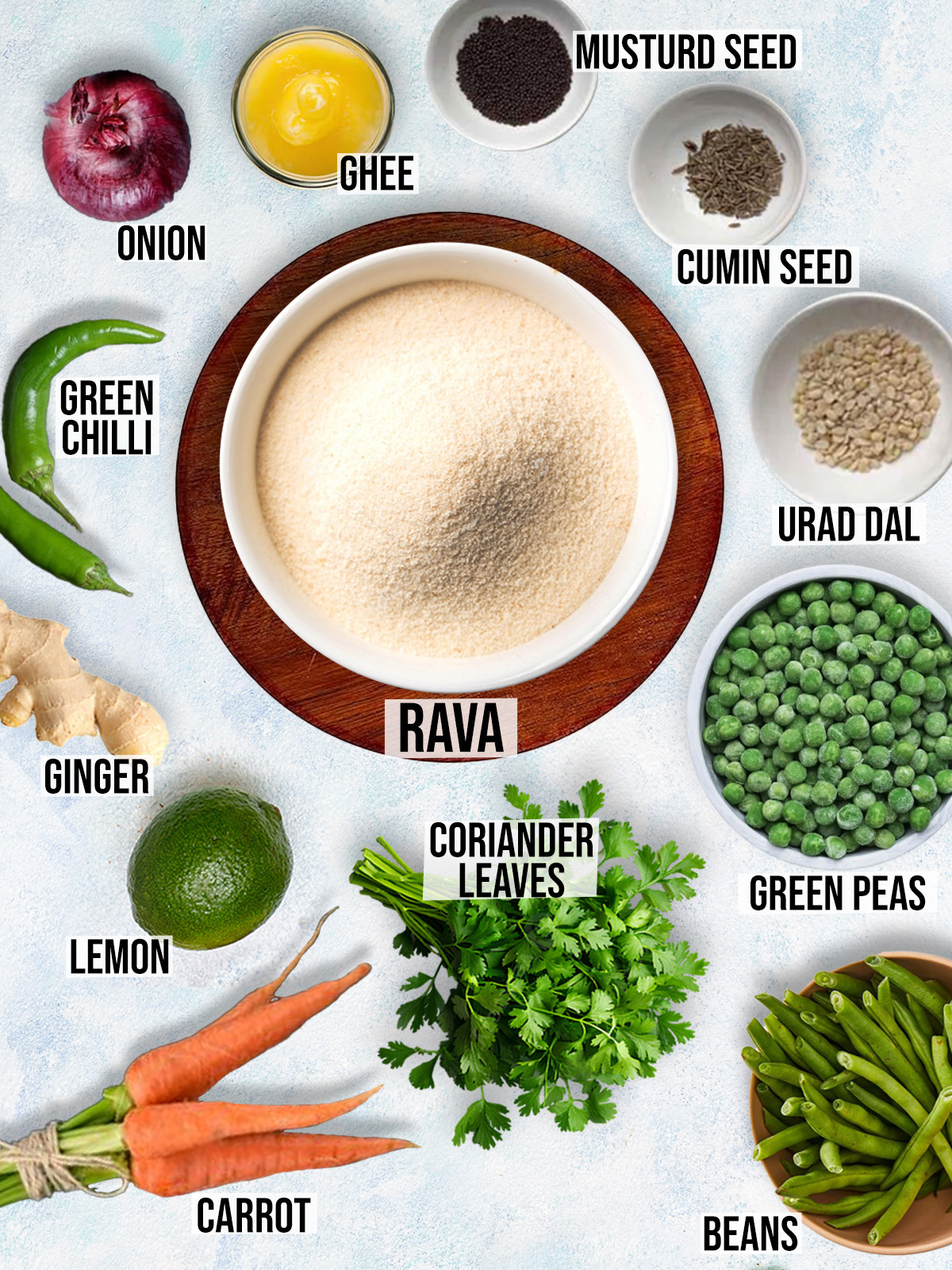
- Rava (Semolina): Main ingredient; choose fine or medium rava for the best texture.
- Oil or Ghee: For sautéing the spices and rava.
- Mustard Seeds: Adds flavor and crunch.
- Curry Leaves: Fresh leaves enhance the fragrance and taste.
- Onions: Adds sweetness and texture.
- Green Chilies: For spice and heat.
- Ginger: Fresh ginger gives a zesty kick.
- Vegetables: Optional but great for color and nutrition (e.g., peas, carrots).
- Water: For cooking the rava to perfect consistency.
- Salt: To taste.
- Lemon: For a tangy flavor boost.
- Coriander Leaves: For garnish and freshness.
How to Make Rava Upma Recipe
Step-by-Step Guide to Preparing Rava Upma Recipe
1. Roast the Rava
- First, heat a pan on medium heat. Then, add the rava and dry roast it. Keep stirring until it turns light golden and smells good. After that, set it aside.
2. Prepare the Tempering
- Next, in the same pan, heat some oil or ghee. Then, add mustard seeds and let them pop. After that, add cumin seeds, chana dal, urad dal, and cashews. Fry everything until it turns golden brown.
3. Add Aromatics
- Then, add the chopped onions, green chilies, ginger, and curry leaves. Sauté everything until the onions become soft and see-through.
4. Cook the Vegetables
- Next, add any vegetables you like, such as carrots, peas, or beans. Sauté them for a few minutes until they start to soften.
5. Add Water
- Then, pour in the water and add some salt. Next, bring the mixture to a boil.
6. Cook the Rava
- Next, slowly add the roasted rava while stirring constantly to prevent lumps. Cook it until the water is fully absorbed and the rava is soft.
7. Finish
- Then, add chopped coriander leaves and a squeeze of lemon juice. Mix everything well, and serve it hot.
Tip:
- Roast the rava well to prevent it from becoming sticky.
- Stir continuously while adding rava to avoid lumps.
- Adjust the water quantity for desired consistency.
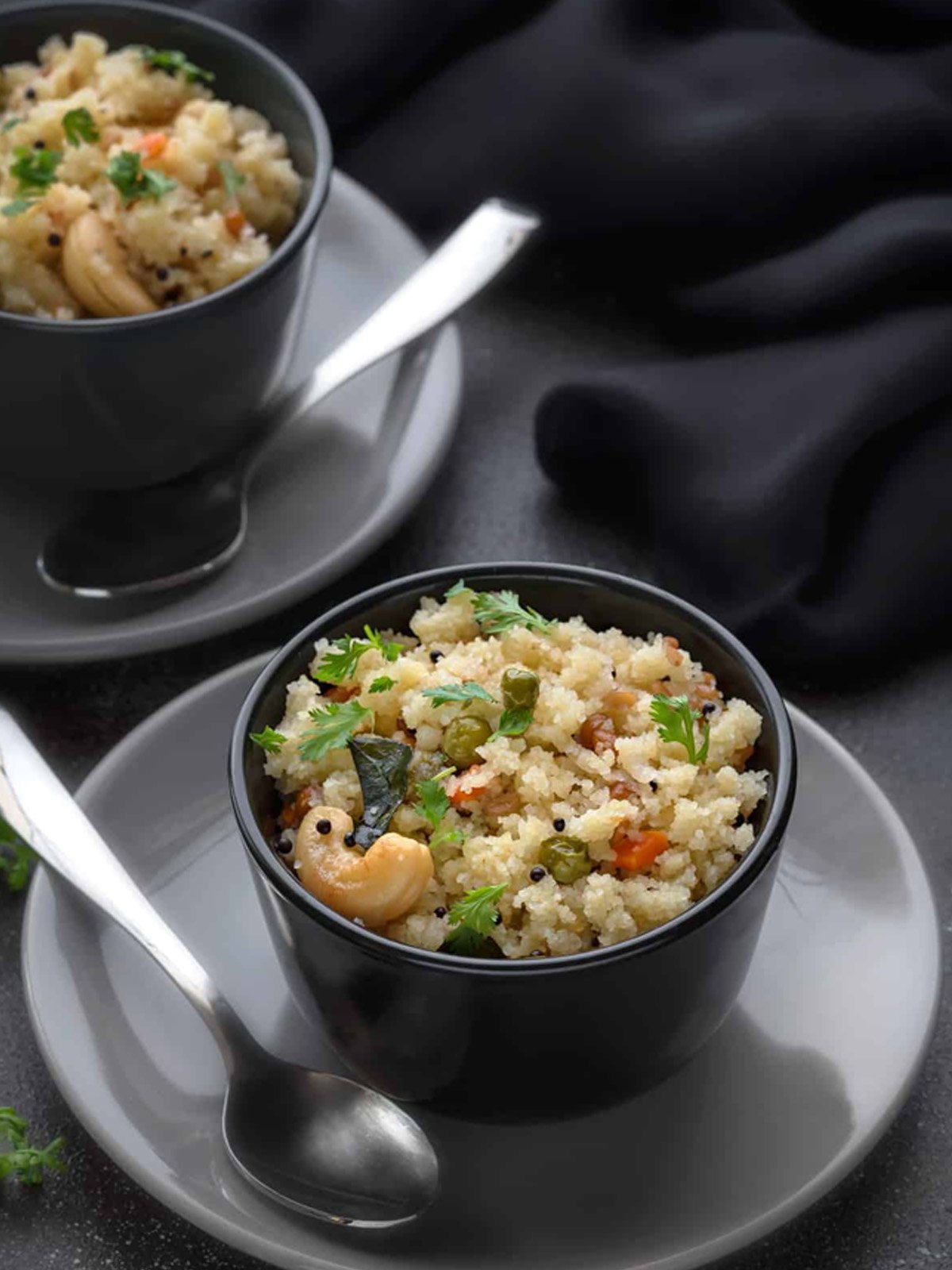
Serving and Presentation Ideas
- First off, the traditional way to serve upma is with some delicious sides like coconut chutney, sambar, or a tangy pickle. These classic pairings make the dish even more flavorful!
- Alternatively, you can add a fun twist by garnishing your upma with fresh coriander, a sprinkle of grated coconut, or a dollop of ghee for extra richness and flavor.
- Moreover, if you want to make your upma more filling, consider pairing it with boiled eggs or adding a spoonful of yogurt. This makes it a hearty and satisfying meal for any time of the day!
Variations of Rava Upma
- First up, there's the Vegetable Upma, a classic version loaded with mixed vegetables for added texture and nutrition.
- Alternatively, try the Khatta Meetha Upma, where tamarind or jaggery adds a tangy-sweet fusion flavor —perfect for those who love a twist!
- For something different, you can bake your upma! Baked Upma is cooked in the oven, giving it a unique texture that's both crispy on the top and soft inside.
- If you're craving richness, try Rava Upma with Coconut Milk for a creamy, indulgent flavor.
- Another option is Onion Rava Upma, where the caramelization of onions adds a deep, savory flavor.
- Lastly, for a fully plant-based version, make a Vegan Upma —no dairy or animal products, just delicious flavors!
Regional Variations
- In Tamil Nadu, they make Tamil Nadu Style Upma with a bit more coconut, which gives it a rich texture. It’s also finished with a spicy touch, making it extra flavorful!
- Moving to Maharashtra, you’ll find Maharashtrian Sheera, a sweet version of upma made with semolina, sugar, ghee, and cardamom. It’s often served during festivals or as a dessert, so it’s perfect for special occasions.
- In Karnataka, they make Karnataka-Style Upma, also called Benne (Butter) Upma. The key here is that they add loads of ghee or butter, which makes it extra rich and tasty!
- Down in Andhra and Telangana, the upma gets a spicy twist! Andhra and Telangana Style Upma features red chilies and garlic for a zesty, bold flavor that’s sure to wake up your taste buds!
Storage & Reheating Tips
To store leftover Rava Upma recipe, place it in an airtight container and put it in the refrigerator. It will stay fresh for about 2 days.
To reheat the Upma, sprinkle a little water on it and microwave for 1-2 minutes. Alternatively, you can heat it in a pan on the stovetop, adding a splash of water to keep it moist.
Tips for Perfect Upma
Preventing Lumpy Upma:
- To avoid lumps, make sure to roast the rava first. Then, when adding water, do it slowly, stirring constantly to keep the mixture smooth. This way, your upma will be nice and fluffy!
Avoiding Soggy Upma
- To stop your upma from being soggy, get the right water-to-rava ratio. Typically, for every cup of rava, use 1.5 to 2 cups of water. Also, don’t overcook it—let it simmer gently, so it absorbs all the water without becoming mushy.
Flavor Variations
- If your upma tastes a little bland, adjust the spices! You can add a pinch of chaat masala, toss in more green chilies for heat, or give it a squeeze of lemon for a fresh zing. These little tweaks can really boost the flavor!
Time-Saving Tips for Rava Upma
1. Quick Upma with Pre-Roasted Rava
- Roast the rava ahead of time and store it in an airtight container. This way, when you’re ready to make upma, you can skip the roasting step and just focus on cooking the rest. It’ll save you time on busy days!
2. Pressure Cooker Method
- If you're in a hurry or cooking for a big group, the pressure cooker is your best friend! Simply add the rava and water, cook under pressure for a few minutes, and you'll have upma ready in no time.
3. Microwave Upma
- For super quick upma on busy mornings, try using the microwave! Just mix the rava with water and spices, then microwave in short bursts. Stir in between, and you’ll have a hot, delicious upma without the wait.
Did you try this Rava Upma Recipe? Leave a ⭐️⭐️⭐️⭐️⭐️ rating below and share it on Instagram, Facebook, and Pinterest!
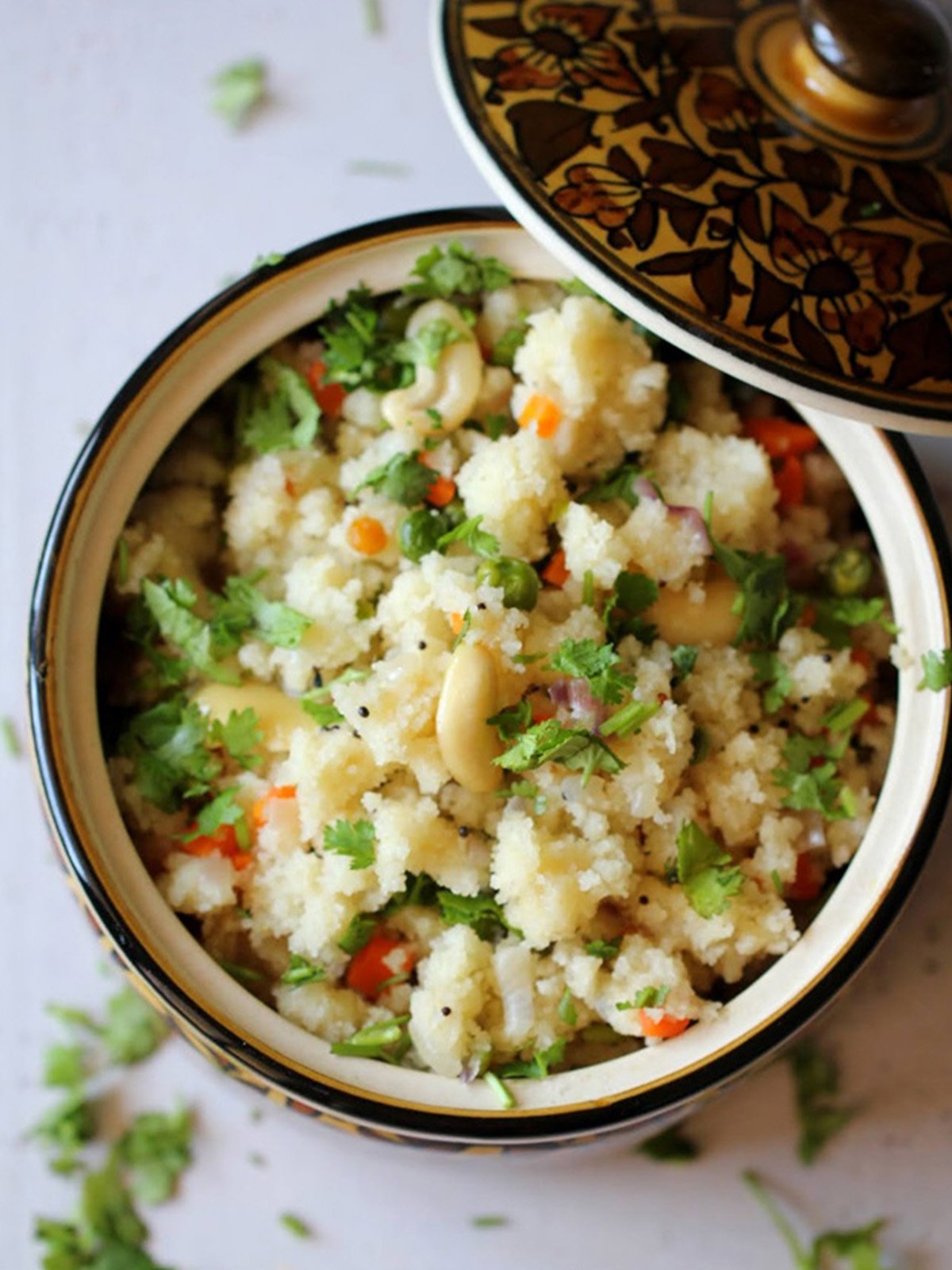
❔FAQs
To make Rava Upma, roast rava, prepare a tempering with spices and onions, cook vegetables, and then combine them with water and rava. Follow detailed steps for a perfect recipe.
Yes, you can add various vegetables like carrots, peas, and beans to Rava Upma for extra flavor and nutrition.
Ensure you roast the rava properly and add water gradually while stirring continuously. Using a 1:3 ratio of water to rava can also help achieve the right consistency.
Store leftover Upma in an airtight container in the refrigerator. It keeps well for up to a day. Reheat before serving.
Variations include adding nuts, using different spices, or incorporating different vegetables. You can also experiment with adding curry leaves or lemon juice for additional flavor.
Lumpy Upma may result from insufficient stirring or adding too much rava at once. Ensure you stir continuously and add water gradually to avoid lumps.
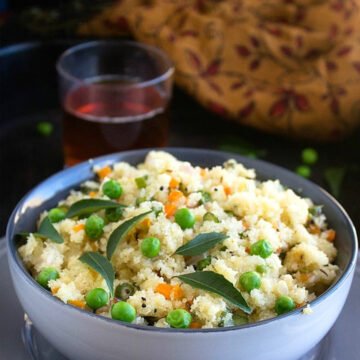
Rava Upma Recipe
Ingredients
Ingredients:
- 1 Cup Rava (semolina)
- 2-3 tablespoon Ghee (clarified butter) or oil
- 1 teaspoon Mustard seeds
- 1 teaspoon Urad dal (black gram split)
- 1 teaspoon Chana dal (split chickpeas)
- 1 Medium onion, finely chopped
- 2-3 Green chilies, slit or chopped
- 1 teaspoon Ginger, finely chopped
- ½ Cup Mixed vegetables (carrots, peas, beans), chopped
- 2 Cups Water
- ½ teaspoon Turmeric powder
- ½ teaspoon Cumin seeds
- 1 tablespoon Lemon juice
- Salt to taste
- Fresh coriander leaves for garnish
Instructions
Roast the Rava
- First, heat a pan on medium heat. Then, add the rava and dry roast it. Keep stirring until it turns light golden and smells good. After that, set it aside.
Prepare the Tempering
- Next, in the same pan, heat some oil or ghee. Then, add mustard seeds and let them pop. After that, add cumin seeds, chana dal, urad dal, and cashews. Fry everything until it turns golden brown.
Add Aromatics
- Then, add the chopped onions, green chilies, ginger, and curry leaves. Sauté everything until the onions become soft and see-through.
Cook the Vegetables
- Next, add any vegetables you like, such as carrots, peas, or beans. Sauté them for a few minutes until they start to soften.
Add Water
- Then, pour in the water and add some salt. Next, bring the mixture to a boil.
Cook the Rava
- Next, slowly add the roasted rava while stirring constantly to prevent lumps. Cook it until the water is fully absorbed and the rava is soft.
Finish
- Then, add chopped coriander leaves and a squeeze of lemon juice. Mix everything well, and serve it hot.
Notes
Variations of Rava Upma
-
- First up, there's the Vegetable Upma, a classic version loaded with mixed vegetables for added texture and nutrition.
-
- Alternatively, try the Khatta Meetha Upma, where tamarind or jaggery adds a tangy-sweet fusion flavor—perfect for those who love a twist!
-
- For something different, you can bake your upma! Baked Upma is cooked in the oven, giving it a unique texture that's both crispy on the top and soft inside.
-
- If you're craving richness, try Rava Upma with Coconut Milk for a creamy, indulgent flavor.
-
- Another option is Onion Rava Upma, where the caramelization of onions adds a deep, savory flavor.
-
- Lastly, for a fully plant-based version, make a Vegan Upma—no dairy or animal products, just delicious flavors!
Tips for Perfect Upma
Preventing Lumpy Upma:
-
- To avoid lumps, make sure to roast the rava first. Then, when adding water, do it slowly, stirring constantly to keep the mixture smooth. This way, your upma will be nice and fluffy!
Avoiding Soggy Upma
-
- To stop your upma from being soggy, get the right water-to-rava ratio. Typically, for every cup of rava, use 1.5 to 2 cups of water. Also, don’t overcook it—let it simmer gently, so it absorbs all the water without becoming mushy.
Flavor Variations
-
- If your upma tastes a little bland, adjust the spices! You can add a pinch of chaat masala, toss in more green chilies for heat, or give it a squeeze of lemon for a fresh zing. These little tweaks can really boost the flavor!


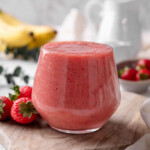


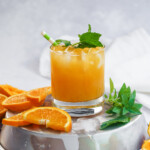

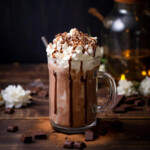




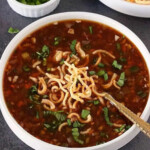
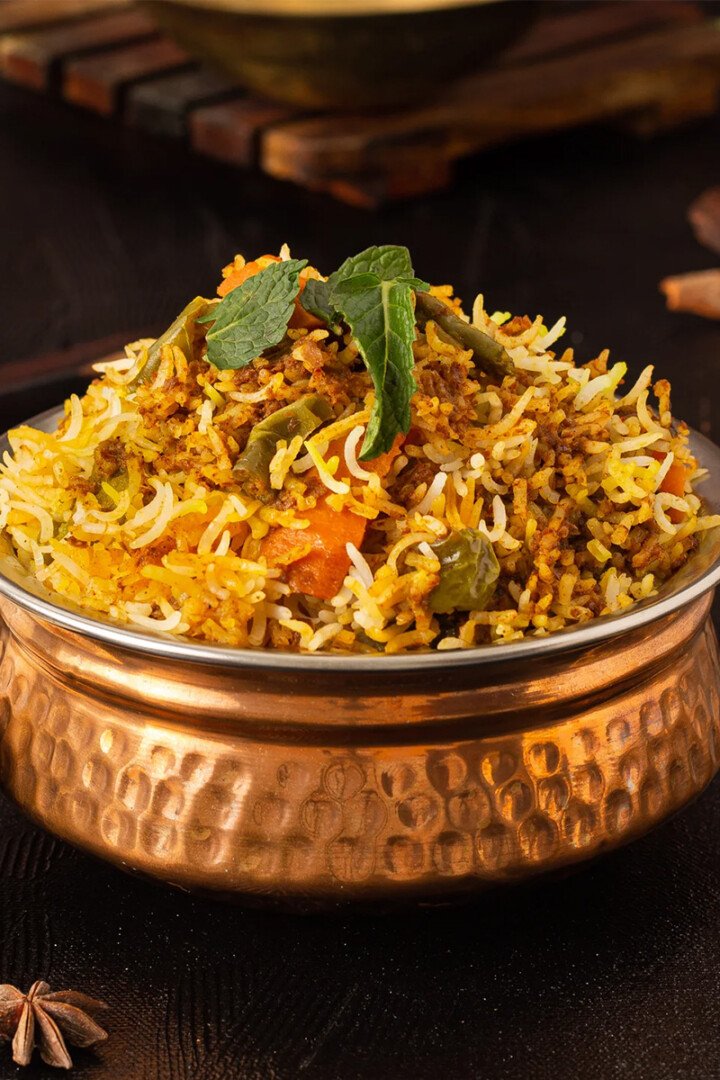
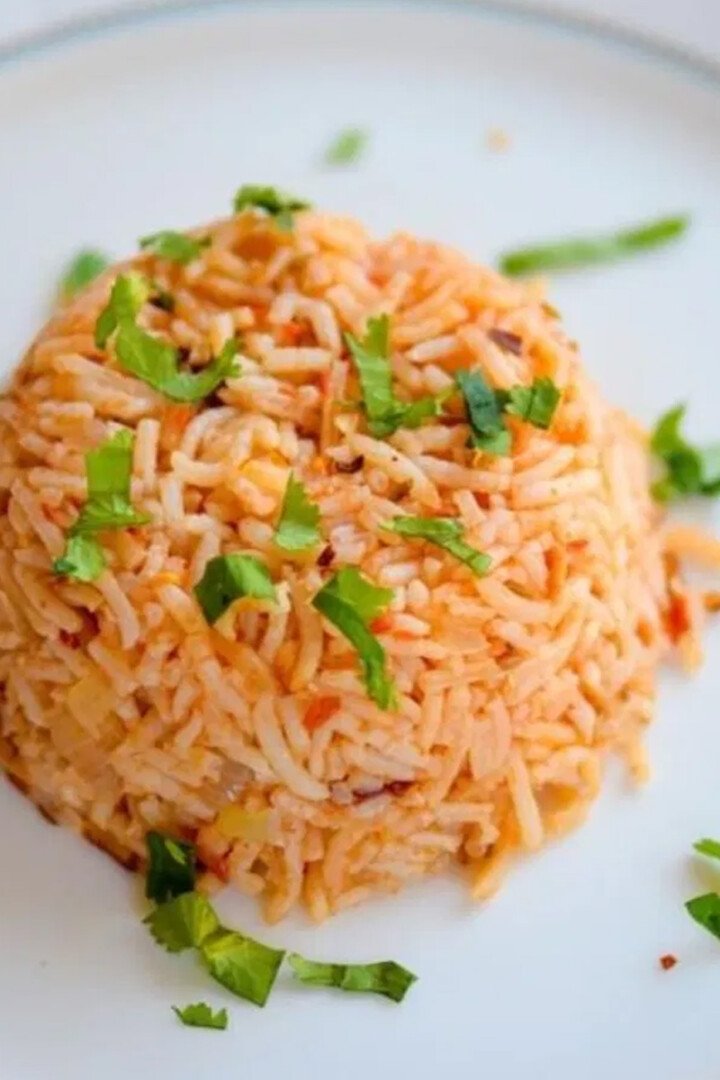


Leave a Reply